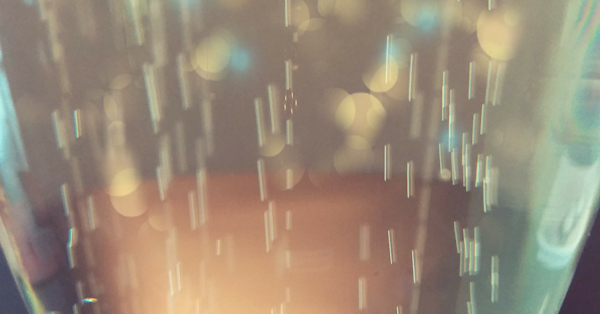By: Melanie Lloyd
I love sparkling wine and I’m very excited to write about this subject. With the holidays around the corner and with so many different types of sparkling wine, I’ve decided to focus this blog on Champagne, the king of bubbly.
Here is some information about Champagne and its various styles.

PROFILE: Medium to full-bodied sparkling wine.
AREA: Champagne, Reims, France. Located 145 km North-East of Paris.
TERROIR: Cool climate. This helps create the fresh acidity found in the wine of Champagne.
Latitude/Altitude: 49° 18’/ 91 m. Sloping Vineyards. Annual Precipitation: average of 628 mm.
Predominantly limestone subsoil which helps keep the vines watered throughout the year.
Four Main Grape Growing Areas: Montagne de Reims, Vallée de la Marne, Côte des Blancs, Côte des Bars.
GRAPE VARIETIES USED: Champagne is made from either one or a combination of the following grapes: Pinot Noir, Pinot Meunier, and Chardonnay.
The white grape varieties Arbanne, Petit Meslier, Pinot blanc and Pinot Gris may also be present in small amounts*.
Some may be surprised to find that Pinot Noir and Pinot Meunier are often present in Champagne despite it usually being a light-coloured wine. The grapes in Champagne are pressed very lightly (with the exception of Rosé) so that there is not much contact with the grape’s skin which leads to this pale colour.

METHOD: Champagne is made using the Traditional Method (Méthode Traditionelle) also called Méthode Champenoise. This method produces lots of fine bubbles and is my personal favourite. A mixture of yeast and sugar is added to still wine directly in the bottle which leads to a second fermentation. This causes the release of carbon dioxide bubbles. Other sparkling wines use this method including Franciacorta, Cava, and Crémant.
RESIDUAL SUGAR:
Champagne varies in sweetness. The sweetness in Champagne is due to a process called ‘dosage’ where a small amount of a mixture of sugar and wine called ‘liqueur d’expédition‘ is added back into the wine before corking. The amount of sugar will vary depending on the bottle.
- Brut Nature Less than 3 grams of sugar per litre. No sugar added (no dosage).
- Extra brut 0-6 grams of sugar per litre. Very dry.
- Brut Less than 12 grams of sugar per litre.
- Extra-dry Between 12-17 grams of sugar per litre.
- Sec Between 17-32 grams of sugar per litre.
- Demi-Sec Between 32-50 grams of sugar per litre. Moderately sweet.
- Doux 50 grams or more of sugar per litre. Sweet.
STYLES:

Blanc de Blancs: Translates to White of Whites. Made from Chardonnay. Lesser amounts of other permitted white grape varieties can also be present.
Blanc de Noirs: Translates to White of Blacks. Made from either Pinot Noir or Pinot Meunier, or a combination of both.
Rosé: Made by adding red wine to white wine, or by fermenting the juice while in contact with the skin of the red grape varieties.
Grand Cru / Premier Cru: Champagne made from the region’s highest-rated vineyards.
Non Millésimé: Champagne that contains wine from multiple years.
Vintage: Made from wine from the same year.
Cuvée: Made from a blend of Champagne grapes.
A couple of interesting facts….
- As opposed to mechanical harvesting, grapes in Champagne are handpicked so that the skin of the grape does not break prior to pressing.
- Champagne that is Non Millésimé must spend a minimum of 15 months aging on its lees, which are the dead yeast cells and remaining grape particles left after the second fermentation. For the other types of Champagne, it is a minimum of three years on its lees. This contributes to the fresh buttery croissant and warm bread aromas associated with Champagne.
A FEW CUVÉES DE PRESTIGE :
- Moët et Chandon, Dom Pérignon
- Pol Roger, Sir Winston Churchill
- Bollinger, La Grande Année
- Louis Roederer, Cristal
- Laurent-Perrier, Grand Siècle
- Billecart-Salmon, Cuvée Nicolas Francois Billecart
- Krug, Grande Cuvée
- G.H. Mumm, Cordon Rouge
- Tattinger, Comtes de Champagne

Wine-Food Pairing for the holidays: A nice brut Champagne will pair well with turkey dinner. If you are having a fancy get-together to ring in the new year, caviar and fois gras will pair well. Champagne will also pair nicely with rich seafood such as lobster, scallops, and crab.
If you are having a get-together where you plan to have finger food, try pairing Champagne with fried appetizers, salty chips, or even buttery popcorn. If you make a cheese platter, make sure it includes creamy cheeses such as Brie and Camembert. Champagne is very versatile and food-friendly.
REVIEW
Champagne Drappier Côte d’Or Brut

Since Champagne can be so pricey, this is a relatively affordable bottle. It is a pale straw coloured Champagne with aromas of baked apple, pear, buttery croissant, hazelnut, floral notes, and a touch of spice. It is full-bodied on the palate, dry, and zesty with its yummy citrus flavours.
Educational resources for this blog:
- Page 72, 73, 74 of L’Atlas Mondial du Vin, 7e édition, written by Hugh Johnson and Jancis Robinson. 2014. Published by Broquet.
- I also want to give a special shout out to my former Vins de France professor at La Cité, Gilles Proulx. The education I gained through him has been so valuable with my every day knowledge of French wine including Champagne and this blog.
*Update to original publication December 18, 2018: As of late 2022, Voltis, a hybrid grape variety resistant to powdery and downy mildew has been approved in small amounts in Champagne AOC on a 10-year trial basis. Voltis may comprise of no more than 5% of the vineyard area, and no more than 10% of the authorized grapes in a blend over a period of 5 years (renewable once). 95% of the plantings must come from the principal grape varieties.
Resources for update:
Source: https://piwi-international.org/en/2022/02/grape-variety-voltis-has-been-approved-for-the-production-of-champagne-aoc
Source: https://winewitandwisdomswe.com/2022/12/15/a-glass-of-voltis-champagne-might-be-in-your-future
Source: https://winewitandwisdomswe.com/wp-content/uploads/2022/12/CDC_Champagne-updated-with-Voltis.pdf

